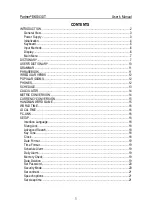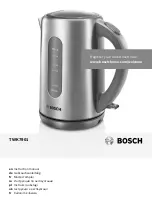
Disk Mode
Creating a Startup File
13-63
Cancel
Exit to Disk Mode.
SetFile
Set Backup starting Þle. This is mainly used when you are backing up Þles from
a larger SCSI drive to several smaller removable media disks. Once one of the
removable destination media is full, note the last Þle that was successfully copied.
Enter the Backup function again, setting up the source and destination path
parameters exactly as before. But this time use the
SetFile
button to start from the
Þle after the last Þle copied.
You will notice that the Þle list displayed when SetFile is pressed is not in
alphabetical order, but in the actual order the Þles occur in the directory on the
disk:
Dir:\||||||||||||Sel:0/15||||Index:|||1|
||||||||||||||||||||||||||||||||||||||||
||||||||||||||||||||||||||||||||||||||||
||Set|start|file:
ZYXWVUTS|.KRZ|||||418K|
|||||||||||||||||PLANKTON|||||(dir)|||||
|||||||||||||||||ANIMALS||.KRZ||||1097K|
|Total:9040K|||||VEGGIES||.KRZ||||2801K|
|||||||
|Root|
|
Parent
|
|Open|
|
|OK||
|
Cancel
Find the last Þle copied from the previous partial backup. Set the list index to one entry past
the location of this Þle. If this Þle is already the last entry in the Þle list, the "next" Þle to
continue the multi-part backup would be the Þle or directory that comes after the Þle list entry
for the currently viewed directory. To Þnd this Þle or directory, you will need to look in the
Parent directory.
A large SCSI drive backed up in this way can be restored by individually backing up the
removable media in the reverse direction.
Backup and Copy will transfer Þles much faster if you have cleared your object RAM Þrst using
the Delete Everything command (save any objects in RAM to disk Þrst.)
When using the Backup function to transfer Þles from SCSI to Floppy, directories are ignored
(i.e. not created on the ßoppy.) This "ßattens" out any directory structure so that multi-disk Þles
can be created on the ßoppy disks.
File Copy
The Copy function lets you copy a single Þle from a directory on one disk to a speciÞed
directory on the destination disk.
Creating a Startup File
You can create a Macro Þle that will automatically be loaded in when you power-on your K2vx.
This Þle, called the
Startup Þle
, or
Boot Macro
,
can be on a disk drive at any SCSI ID or else on
the Floppy disk. See the section on Macros for background information.
The steps needed to create a Startup Þle are:
First, create a Macro Þle called
BOOT.MAC
in the root directory of the SCSI or Floppy disk that
you will use as the Startup disk. Specify in the Macro the exact ordering of Þles that you would
like to have loaded into the K2vx when powered on. When you save the Macro Þle, just name
the Þle "BOOT", and the K2vx will add the ".MAC" extension.
Содержание K2500RS
Страница 12: ...Table of Contents TOC 12...
Страница 16: ...Introduction How to use this manual 1 4...
Страница 32: ...User Interface Basics The Panel Play Feature K2vxR 3 8...
Страница 106: ...Effects Mode and the Effects Editor Configurations and Parameters 9 24...
Страница 186: ...Song Mode Recording Multi timbral Sequences via MIDI 12 52...
Страница 304: ...DSP Functions Hard Sync Functions 14 52...
Страница 394: ...Programs Setups and Keymaps K2500 ROM Keymaps 21 12...
Страница 402: ...LFOs LFO Shapes 23 4...
Страница 406: ...Note Numbers and Intonation Tables List and Description of Intonation Tables 24 4...
Страница 434: ...DSP Algorithms 26 14...
Страница 450: ...MIDI and SCSI Sample Dumps SMDI Sample Transfers 29 8...
Страница 464: ...Glossary 31 6...
Страница 490: ...K2vx Program Farm VOX K25 Appendix A 22...
Страница 494: ...K2vx Compatibility Converting programs from the K2vx to K2000 Appendix B 4...
















































